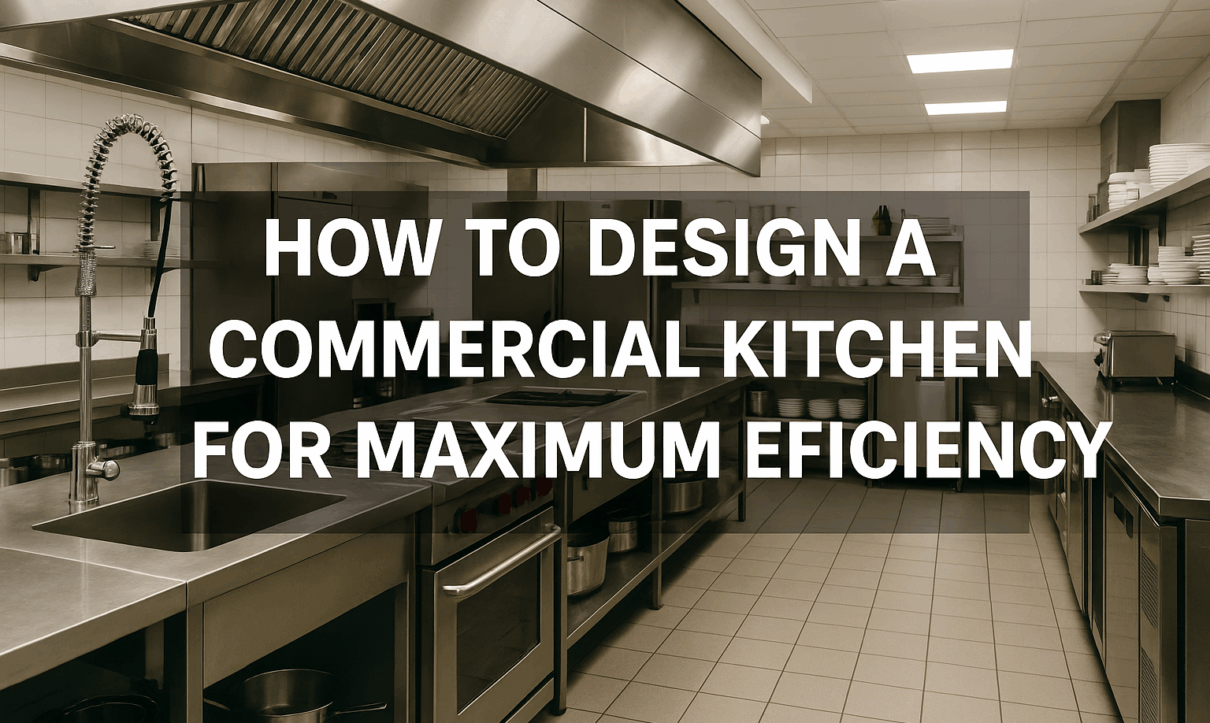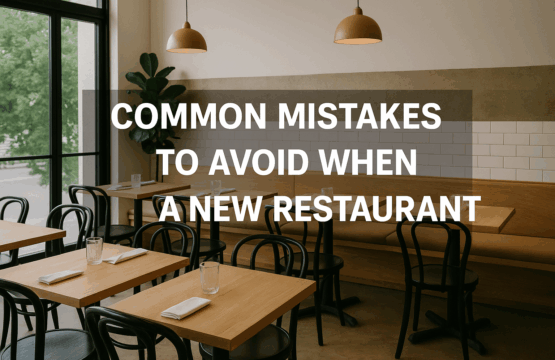Designing a commercial kitchen isn’t just about picking the right equipment or squeezing everything into a room. It’s about creating a space that allows your team to work smoothly, safely, and fast — every single day. Whether you’re launching a cloud kitchen, a cafe, or a full-service restaurant, a well-designed kitchen can save you time, reduce costs, and improve food quality.
So, how do you design a commercial kitchen for maximum efficiency? Let’s break it down.
Start with the Workflow — Not the Equipment
Before you start shopping for appliances or drawing floor plans, think about your workflow. How does food move through your kitchen?
From receiving ingredients to prepping, cooking, plating, and cleaning — every step should be fluid. Each station needs to be positioned in a way that minimizes backtracking and avoids bottlenecks during rush hours.
The smoother the workflow, the faster the service and the fewer the mistakes.
Choose the Right Kitchen Layout
There’s no “one-size-fits-all” layout for every kitchen. Your layout depends on your menu, team size, and kitchen space. But here are a few common models:
- Assembly Line Layout – Perfect for QSRs or cloud kitchens with high-volume and limited menus.
- Zone-Style Layout – Ideal for larger restaurants where each area handles a specific cooking method (grill, fry, bake, etc.).
- Island Layout – Great for open kitchens or hotels where teamwork and visibility are key.
- Galley Layout – Best for tight spaces where efficiency and space-saving are top priorities.
The right layout can reduce staff collisions, improve communication, and increase productivity.
Invest in Smart Equipment, Not Just Big Equipment
It’s tempting to buy the biggest oven or most advanced range, but that doesn’t always translate to efficiency.
Look for:
- Multi-functional equipment like combi-ovens or tilting pans.
- Undercounter refrigeration to reduce trips across the kitchen.
- Energy-efficient appliances to cut utility costs in the long run.
- Modular designs that can be rearranged or upgraded as your business grows.
Choosing the right equipment tailored to your menu and kitchen size is key to avoiding clutter and chaos.
Prioritize Ventilation and Safety
Good ventilation isn’t just a legal requirement — it’s vital for staff comfort and food safety. Install high-capacity exhaust systems with hoods that capture grease and smoke effectively. Plan your ductwork early to avoid expensive modifications later.
Also, don’t overlook:
- Anti-slip flooring
- Fire extinguishers and suppression systems
- Adequate lighting
- Easy access to fire exits and safety switches
A safe kitchen is an efficient one.
Storage: Easy Access, Zero Waste
Smart storage saves time, reduces waste, and makes inventory management easier. Designate space for:
- Dry storage (shelves, containers, bins)
- Cold storage (walk-in refrigerators, undercounter units)
- Prep storage (near each station)
Label everything, and keep your frequently used items within arm’s reach.
Don’t Forget the Dishwashing Zone
The dishwashing area often gets less attention — but it’s a major part of kitchen efficiency. Separate clean and dirty zones. Invest in a commercial dishwasher that suits your volume. And make sure the layout doesn’t cross paths with food prep zones to avoid contamination.
Plan for Future Growth
Today’s needs may not be tomorrow’s. Leave space for:
- Additional equipment
- Seasonal menu changes
- Staff movement
- Technology upgrades (like kitchen display systems or automated timers)
Design with flexibility in mind so your kitchen can evolve with your business.
Final Thoughts
Designing a commercial kitchen for maximum efficiency is all about thoughtful planning. It’s not about how fancy your space looks, but how well it works. With the right layout, workflow, equipment, and foresight, you can build a kitchen that supports high performance, team morale, and customer satisfaction.
Thinking of starting or renovating your commercial kitchen?
Let the experts at AB Hospitality and Overseas guide you from layout to equipment and installation. We help you plan, build, and operate kitchens that work like clockwork.




